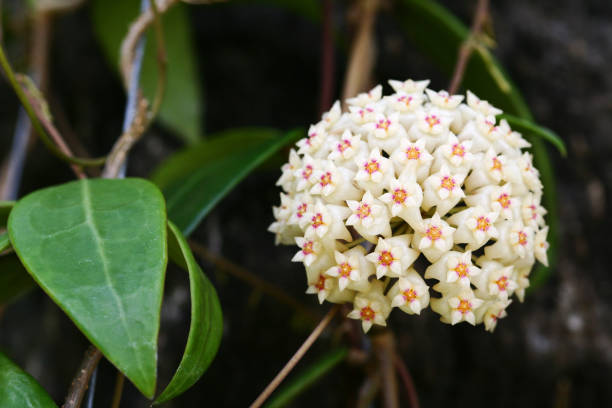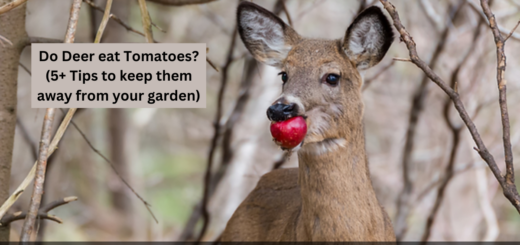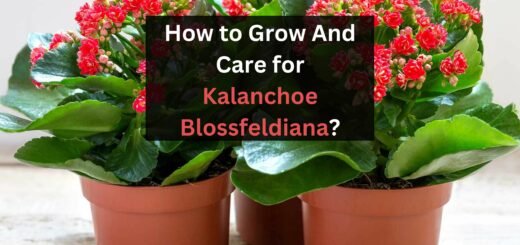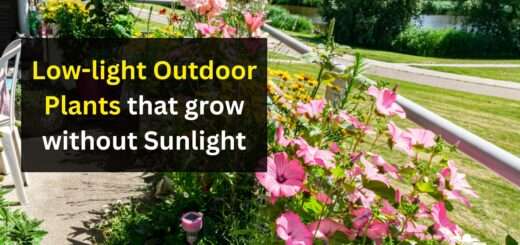Hoya Verticilata: Growing And Caring Guide To Know
There are more than 500 varieties of Hoya, so there might be confusion in choosing the best one. Hoya verticilata is a stunning houseplant that is a low-maintenance plant. Hey folks! I’m Anna Scott, a Gardener by heart and Profession, started my Journey 15 years ago and Now I am teaching other gardeners as well to achieve their goals.
Hoya verticilata is an attractive plant that will fill your garden area with its thick and waxy dark green colored leaves producing about 6 to 11 cm tall and 2.5 to 6 cm wide. This perennial produces star-structured blooms in the plant in the shades pink to brown. With this, it even produces fragrance in the plant. Its flowers will last for about five days in the garden area. So, growing this plant is not a difficult task, you have to follow this guide.
Last but not least, growing this plant is gerat but also you have to maintain the growth of the plant at the same time. So, are you ready? Let’s begin this guide to know about growing and caring for Hoya verticilata in detail.
About the Hoya verticillata Plant
Hoya verticillata is a fast-growing plant that will grow best in low sunlight to medium sunlight. It produces dark green colored elaevs in the plant containing yellow veins on it. It is native to the areas of Asia and Australia.
It shows that this plant will grow in any of the climatic conditions. Under caring conditions, this plant produces oval-shaped leaves of about 6-10 cm long. Provide more sunlight to the plant to encourage blossom in the plant. Its blooms come in shades of white, pink, and brown at its center. It will bloom in the warm season.
In other words, Hoya verticillata is a fast-growing plant that contains more than 500 species and even more cultivars of it. But this one is the best it produces thick and vaccine leaves in the plant that will retain water during the hot times or the summer season.
It produces star-structured blooms in the plant that are fragrant and considered the best climbers. last but not least you have to provide them some support to grow like trellis.

How To Identify Hoya Verticillata?
Hoya Verticilata is a climber that will be easily identified in the tropical rainforest. It produces cream-coloured clusters that look stunning. Also, its star-structured blooms in the shade of pink or red color look unique in the area.
The fragrant essence of these flowers will be so enchanting for you. Look for the waxy leaves in the Hoyas in the ovate shape which will indicate it’s the Hoya Vericillata. Last, but not least this variety is different from the other species of the Hoya.
How to Grow Hoya Verticilata in Your Garden?
As I already explained, cuttings are the best way to propagate a plant and the same is the case with Hoya Verticilata which can be easily grown with the help of stem cuttings that you will pinch off from the mother plant. So let’s get started to know the steps on how to grow Hoya Verticilata:
- First, Make use of clean and sharp sterilized scissors to take the stem cuttings from the mother plant.
- Then cut stem cuttings from the mother plant that should contain 2 to 3 nodes in every cutting.
- Remove the leaves from the base of the nodes and the remaining leaves in the cuttings.
- Then Put the cuttings in the container that is filled with water at the bottom and keep the leaves above the water.
- Place your cuttings at the location, where they can receive plenty of bright, indirect sunlight.
- Water one time a week so that they grow well, after 15 to 20 days you will observe tiny roots coming from the nodes.
- Then when it becomes 1 inch long, you can move it in the soil by making use of a well-drained potting mix for your plant.
- By planting the cutting in the soil, keep in mind to water the plant till the excess water flows out from the drainage holes.
- Place the plant in bright indirect sunlight so that it grows well and you can resume watering after 10 to 15 days.
How to Care for Hoya Verticilata in Your Garden?
Hoya verticillata is a fast-growing plant that requires attention to grow well but sometimes it happens otherwise and the plant faces issues that affect its growth.
So, before it happens with you let’s move forward to throw some light on the caring tips for this plant in detail. They are as follows:
Sunlight
- It requires a good amount of bright indirect sunlight to grow or provide it with full morning sunlight. It will help in providing energy to the plant to produce blooms and foliage.
- Direct sunlight will burn the leaves of the plant by bleaching the color of the leaves and making it fade.
- Last, but not least, Provide this plant with artificial lights, and after that, they can be used in the offices also.
Soil
- Feed this plant with a good amount of soil that should be well drained and rich in nutrients to grow well.
- You can make your soil mix which will help the plant to prosper at its best.
- Provide the plant with compost, fertilized soil, fine bark, etc as it will help in providing a good amount of nutrients to the soil, which will help it grow and feed you with the results.
Watering
- Water is required by every plant and this plant requires to be watered from spring till fall.
- Let the soil dry out between waterings so that there is no result of overwatering in the plant.
- Choose a container with a good amount of drainage holes as it will help retain the excess water from the plant.
- Provide room temperature water to the plants as the cold water will be a shock for them.
- Last, but not least, water the plant only if the top inches of the soil are dry.
Temperature
- The ideal range of temperature for this plant lies between 60°F to 65°F at night.
- During the daytime, the temperature should be between 70°F to 80°F so that the plant grows well.
- Do not keep the plant at a cold temperature as it will stop the blooms in the plant.
- Last, but not least, it will produce beautiful blooms in the plant if provides proper temperature.
Fertilization
- Fertilize this variety every month so that the plant receives a good amount of nutrients to grow.
- Water soluble fertilizer will suit the growth of the plant.
- It is suggested to dilute it to half of the recommended strength to avoid overfertilization in the plant.
- Make use of fertilizer that is high in potassium to encourage blooms in the plant.
Pests and Diseases
- Every plant is susceptible to pests and diseases, such as aphids, mealy bugs, etc, So it is important to save the plant with proper care.
- Fungal infections are caused in the plant, which is not good for the health of the plant.
- Make use of horticultural oils like neem oil to prevent pests in your garden.
Toxicity
- This plant can cause skin irritation as it contains latex which is harmful to the touch.
- If you come in contact with it, then it will be problematic for you.
- So it is suggested to keep the children and animals away from the plant.
Repotting
- This plant requires to be repotted every year when you observe that the roots are coming out from the drainage holes.
- It shows that the plant is overgrown and needs to change its place to grow well.
- choose a container that is 1 inch bigger than the current pot otherwise, there will be chances of root bound in the plant.
- Also, make use of fresh potty mix at the time of repotting.
Pruning
- Prune off this plant in the time of spring and summer when the plant grows actively.
- It will promote new blooms in the plant. Do not prune the blooming stalk.
- Make use of sharp sterilised scissors to trim the plant.
6 Common Problems, Pests & Diseases
Hoya verticillata is a plant that is prone to some pests, problems, diseases, etc. So prevent your plant from enjoying its benefits. For that reason. I am here with some of the common problems to consider so that you fix them as soon as possible. They are as follows:
Aphids and Mealybugs
Aphids tend to attack the plant, so it is important to prevent the plant. Make use of insecticide and follow the instructions written on its packaging.
Root Rot
Root rot is one of the common problems faced by every plant. Keep the gap between waterings so that the soil becomes fully dry. It is because the main cause is the wet soil in the plant.

Leaves Are Yellow and Burnt
Another common problem is the yellow-colored leaves in the plant. It happens because the plant receives too much sunlight. So, keep it in a location where it receives indirect sunlight to grow.
Wilting Leaves
Another problem faced by the hoya is the wilted leaves in the plant. It happens because of the excess supply of water or excess supply of fertilizer in the plant. So keep in mind the water only when the soil becomes fully dry.
For that, you have to check the moisture of the soil by inserting a finger inside the soil and if it feels damp, then there is no need to water the plant.
Leaf Drop or Blackening Of the Leaves
Last but not least, it is another common problem faced by this plant. It happens because of the excess supply of water in the soil. So you have to prevent it by providing the right amount of water to the plant when the soil becomes dry.

It will cure the plant with time. Also, If the plant is facing a leaf drop, then it shows that there is a lack of sunlight in the plant.
Summing up the Context
In this guide, you come to know that Hoya verticilata is an attractive plant that will fill your garden area with its thick and waxy dark green colored leaves that are about 6 to 11 cm tall and 2.5 to 6 cm wide. This perennial produces star-structured blooms in the plant in the shades pink to brown.
With this, it even produces fragrance in the plant. Its flowers will last for about five days in the garden area. So, growing this plant is not a difficult task, you have to follow this guide. I hope you are clear with the guide. I will come back with another informative guide for you all soon.
Thanks for reading! Happy Gardening!
FAQs
How do you encourage new growth on Hoya?
To encourage new growth on hoya, you have to prune the dead and decayed leaves from the plant. Also, trim the plant to a point above the leaf on the stem as it will encourage new growth in the plant.
What are the best conditions for hoya plants?
The ideal conditions for this plant are that it requires a good amount of indirect sunlight to grow. Hoyas like to grow in warm climatic conditions that should be frost-free. When the cool climate is there, keep the plant indoors.
What fertilizer makes hoya bloom?
Provide the plant with fertilizer that is rich in phosphorous as it will encourage new growth in the plant. It provides nutrients to the plant which will stimulate the growth in the plant.





